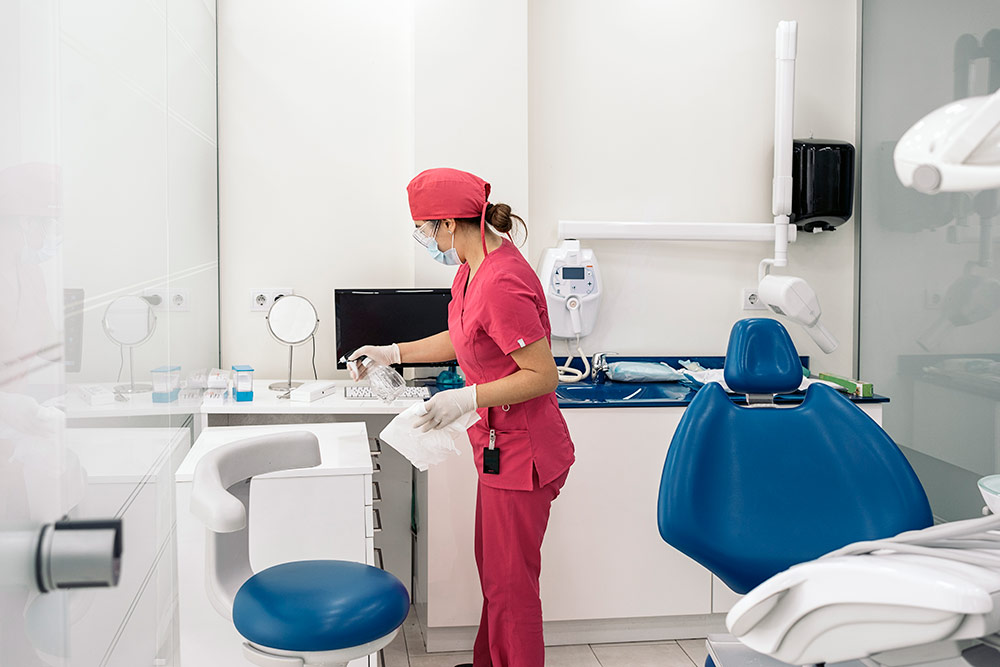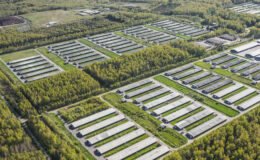In the wake of the ongoing COVID-19 pandemic, the importance of rigorous infection control measures in healthcare environments has never been more evident. As we grapple with the challenges posed by infectious viruses like SARS-CoV-2, norovirus, and the infamous Clostridioides difficile (C. difficile), the choice of cleaning agents plays a pivotal role in safeguarding the health of patients and healthcare workers. While chlorine-based cleaning agents have been a longstanding choice, recent research has shed light on their limitations and potential health risks. This article delves into the issues with chlorine-based cleaning agents and explores a safer and more effective alternative.
The Pitfalls of Chlorine-Based Cleaning Agents
Chlorine-based cleaning agents have long been favoured for their broad-spectrum disinfection capabilities. However, they have come under scrutiny due to their potential adverse effects on human health and the environment. In the context of the COVID-19 pandemic, where frequent disinfection is crucial, the hazards associated with these chemicals become increasingly worrisome. A significant 30-year study conducted by Harvard University and the French National Institute for Health and Medical Research in 2019 revealed an alarming link between disinfectant chemical exposure and an increased risk of developing chronic obstructive pulmonary disease (COPD) among healthcare workers, particularly nurses in the US.
This extensive study examined various cleaning agents, including hypochlorite bleach and hydrogen peroxide, and found a disturbing 25% to 38% elevated risk of COPD among nurses, irrespective of factors like asthma and smoking. These findings emphasise the urgent need for safer alternatives that not only maintain high infection control standards but also minimise health risks for those on the front lines.
A Safer and More Effective Solution: SANI-99™
Addressing these pressing concerns, Scientific Sanitation Solutions has introduced SANI-99™, a revolutionary disinfectant spray that overcomes the limitations of chlorine-based cleaning agents. Developed with a strong focus on safety and effectiveness, SANI-99™ is an alcohol and chlorine-free solution that has recently received approval for NHS procurement. This environmentally-friendly disinfectant marks a significant advancement in infection control protocols, particularly in healthcare settings.
SANI-99™ has been meticulously crafted to target and eliminate a wide range of pathogens, achieving laboratory certification for Log 7 purity reduction – the highest standard attainable. This means that it has the exceptional ability to eradicate 99.9999% of all known germs and harmful bacteria, a capability that sets it apart from traditional chlorine-based disinfectants. By embracing the power of SANI-99™, healthcare facilities can confidently enhance their disinfection protocols while significantly reducing the risk of adverse health effects associated with prolonged chemical exposure.
A Future Centred on Safer Infection Control
The importance of effective disinfection in hospitals cannot be emphasised enough. Infection control is central to preventing the spread of diseases and ensuring the well-being of patients and healthcare workers alike. With the approval of SANI-99™ for NHS procurement, a new era of safer and more environmentally friendly disinfection is on the horizon. Hospitals and healthcare facilities must prioritise the implementation of advanced disinfection protocols like SANI-99™ and provide comprehensive training to staff to maximise its benefits.
In the quest to combat infectious diseases, it is imperative that we embrace innovative solutions like SANI-99™ to protect the health of our communities and the dedicated individuals who tirelessly care for them. By moving beyond the limitations and risks of chlorine-based cleaning agents, we take a significant step forward in creating a safer and healthier healthcare environment for all.
To learn more about this groundbreaking solution and the challenges of chlorine-based cleaning agents, please read the full article here: Link to the full article









